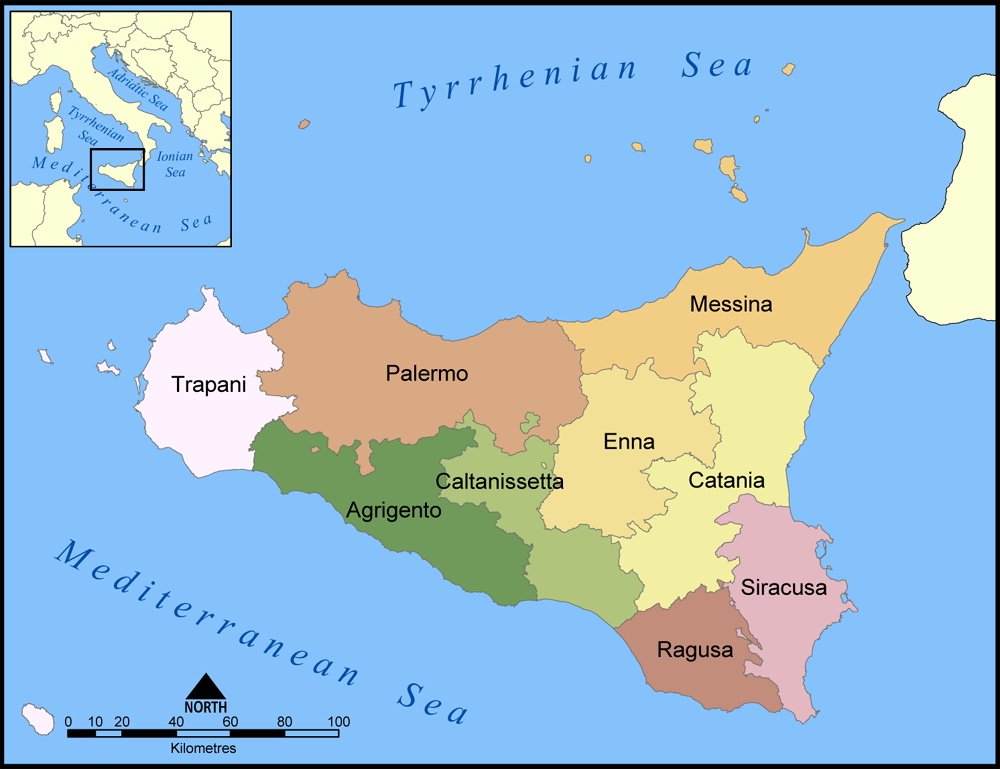Messina

History
Like all of Sicily, Messina has a long, rich history dating to before the time of the ancient Greeks; the first Punic War was started in Messina when the city was invaded by mercenaries from Campania (paid by the Greek city-state of Syracuse; the people of Messina called on the Romans to assist in their defense; Messina then became an important port for the Romans in their domination of the Mediterranean. This close alignment to the Roman center of power provided economic advantages to Messina that were not available to the rest of Sicily. Because of the Roman presence, Messina was actually one of the last cities of Sicily to fall to the Arabs (9th century). The first of the Norman kings liberated Messina from the Arabs a scant 200 years later and established his hold over other parts of the island from Messina. Sicily's prime location in the Mediterranean has always made it attractive to transient conquerors; Richard the Lionheart took an interest in Messina and fortified it so that it was a military port for Crusaders traveling to and from the Holy Land. The Spanish further influenced the culture of the province during their reign in the 17th century. Unfortunately, the province is prone to earthquakes and has been devastated by at least two major ones: 1783 and 1908. Each quake, while resulting in tragic deaths of tens of thousands of people, also allowed for a re-birth of architectural style and contributed to the patchwork of Norman, Baroque, Spanish, Greek and Arabic buildings in the province.
In later years, Enna became the focal point in the struggle between the Byzantines and the Arabs, each of which had one half of the island but could not get beyond Enna. The Arabs did manage to wrest control of central Sicily and continued their march eastward, gaining control of the entire island around AD 900. Arab control lasted until 1087 when the Normans invaded successfully.
Cuisine
The food of Messina is heavily influenced by the Arabic dominance of the mid-Middle Ages. While the conventional wisdom is that Italians don’t eat a lot of sweets, Messina, with its lovely marzipan, pastries, cannoli, gelato, cassata and other Arabic creations, is an exception.
Like most of Sicily, the diet of people in Messina involves a lot of seafood. Closest to the “boot” of Italy, Messina is largely defined by the Straits of Messina, which separates Sicily from the mainland. Swordfish, called the “king of the Straits,” is a popular dish, as are stockfish, shellfish and cuttlefish. Eggplant, brought to Sicily from Asia by the Arabic conquerors, is very important to cuisine in Messina. It is served broiled, baked, stuffed, sauced and fried... delicious in all forms!
Tourism
Taormina, home to some of the best preserved Greek ruins in the world, is a major attraction in Messina. One of the not-to-be-missed sites, Taormina has a wonderful Greek ampitheater and other ruins... with a Roman aqueduct nearby. The Aeolian Islands just off the coast are a popular vacation spot for people from all over, as is Mt. Etna Park. Greek, Roman, Medieval, Norman, Baroque and Arabic architecture make every mile of Messina picturesque. In the Cathedral of Messina, the largest astronomical clock in the world is also a popular attraction. The ferry across the Straits of Messina, a beautiful trip in and of itself, puts Calabria on the mainland within easy reach, as are Catania and the rest of Sicily; the city of Messina is less than 200 miles from Palermo. Messina has beautiful beaches and coastline as well.
Messina Province Information
Messina Tourism Site
Sicilian Provinces: Agrigento, Caltanissetta, Catania, Enna, Messina, Palermo, Ragusa, Siracusa, Trapani
Agrigento
Caltanissetta
Catania
Enna
Messina
Palermo
Ragusa
Siracusa
Trapani